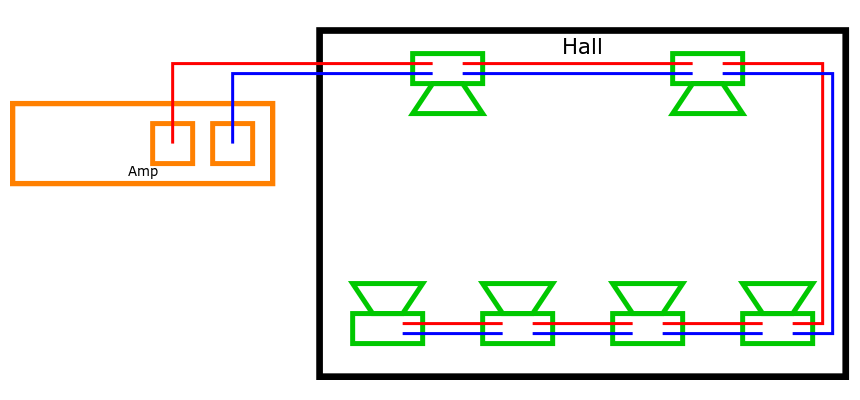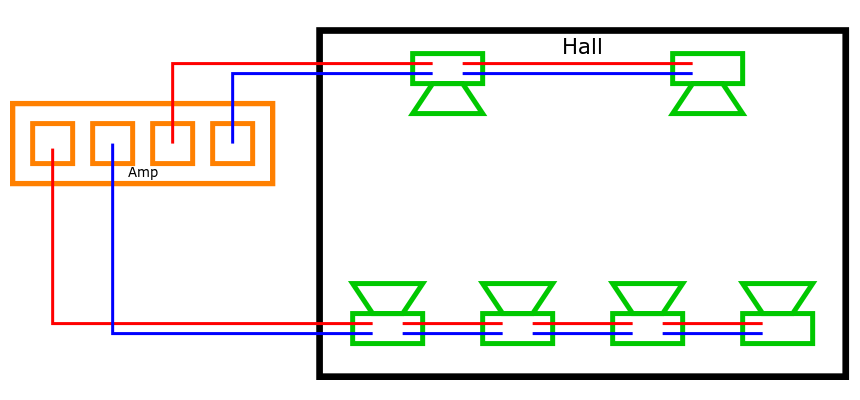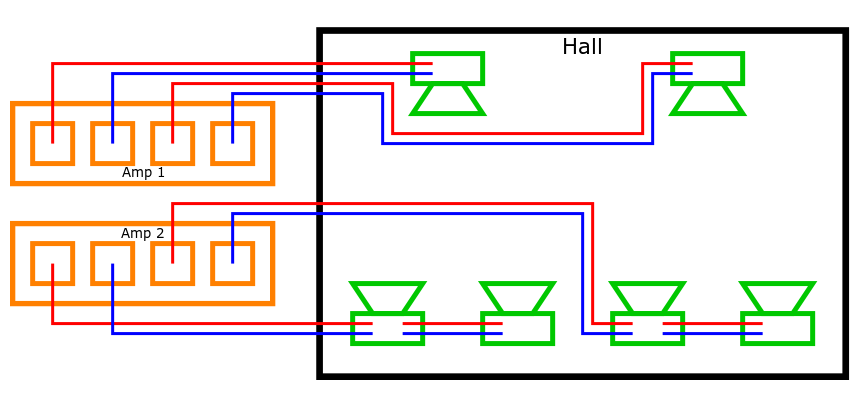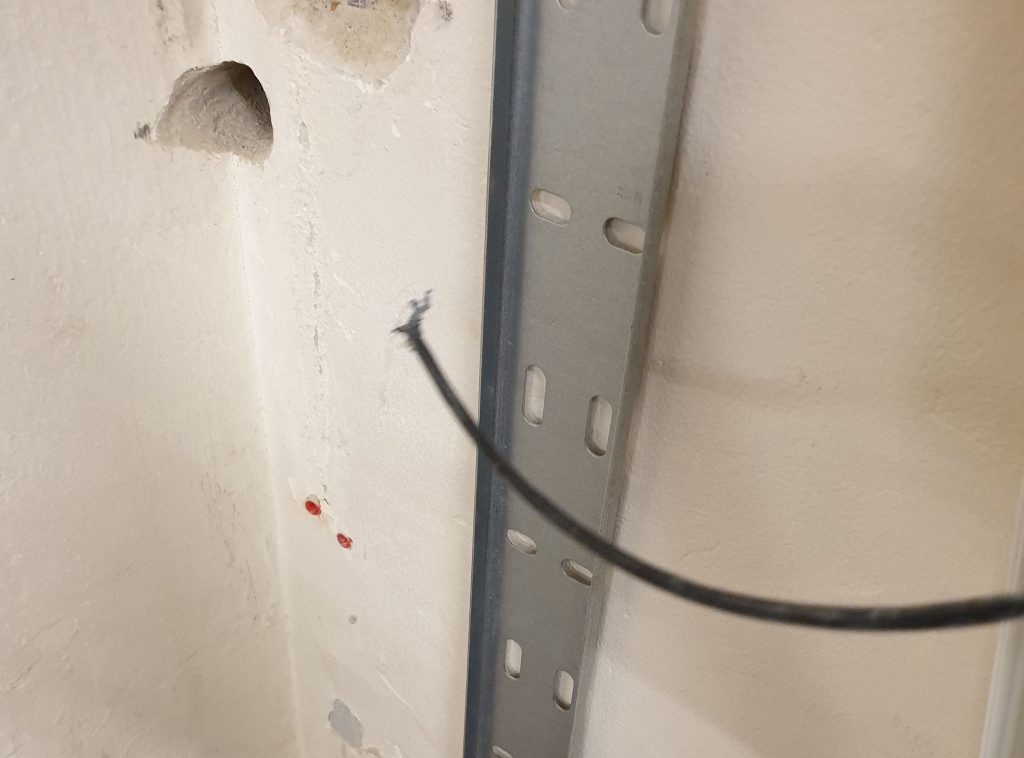When Failure is not an option
High Availability is when you need to have sound (and maybe video) in the event of equipment or cable failure. if you have a daily service or have multiple prayers in a day you rely on sound for the service and you always need it working. High Availability allows you to still have sound if a component fails allowing you to continue your service albeit with reduced fidelity.
For example, if you only have 1 amplifier and it fails, you won’t have sound until that amplifier is repaired or replaced. This could be anything from a day to months if you have to send it away to get repaired and parts are not available.
Fortunately most halls need multiple speakers and components so we can design a system that distributes the load among multiple devices to mitigate against failure.
When thinking about High Availability we ask the question:
“What happens if this piece of equipment breaks down?”
When you apply this question to the complete audio chain we begin to see that this can be a daunting task. However, we may feel that a partial high availability design may be enough an there is always the possibility of adding to it later.
Lets look at the components in a sound system and see how we can make the system highly available.
Speakers
Normally at least 2 speakers are installed in every area. So if a speaker fails there is at least another speaker to provide sound. If there is just 1 speaker in a small room consider installing another to mitigate against failure. If you are installing speakers in a hall you would normally have 2 or more speakers. For the best coverage, space speakers around 6m apart which will help you determine how many speakers you need.

This hall has 2 JBL CBT-100 LS-1 speakers on either side of the podium. There are a further 2 speakers on the front wall and 8 ceiling speakers in two rows giving even sound throughout the hall.
Amplifiers
Amplifiers are the heart of a sound system. There is no sound without an amplifier. Therefore we should try and design the system to use more than 1 channel or amplifier.
Let’s take the following example of a typical hall with 2 front speakers and 4 ceiling speakers:

Here you can use 1 amplifier to drive all the speakers. If a speaker cable breaks between the front two speakers, only 1 the first speaker would be working. This is a very typical system with a 100V line amplifier powering all the speakers. If the amplifier fails there is no sound.

Here we can use a stereo (2 channel) amplifier with 1 channel driving the front speakers and the other channel driving the rear speakers. This is another typical setup for a hall. If a speaker cable breaks the hall still has a reasonable coverage of sound. Again, if the amplifier fails there is no sound.

Here we have 2 mono (1 channel) amplifiers with 1 amplifier driving the front speakers and the other amplifier driving the rear speakers. If one amplifier fails or a speaker cable breaks, there is still sound in the hall.

Finally we have 2 stereo amplifiers with 1 amplifier driving the front left and right speakers per channel and another stereo amplifier driving the rear speakers split in half with 2 speakers per channel. This gives us very good resilience against failure and sound quality is improved as we can have stereo imaging (for effects for example).
The above examples improve sound availability with each step. Further improvements can be made by having an individual channel per speaker to mitigate against speaker cable damage. Three stereo amps of the same type would be ideal. Further interleaving of the channels and amplifiers improves the spread of sound if there is a failure.

Here we have 2 JBL / Crown DSi 4 channel amplifiers to power the front 4 speakers of 2 large halls. If an amplifier fails the speakers can be reconfigured to the working amplifier to ensure sound from all speakers while the failed amplifier get repaired.
Cables
Cables are usually installed into the building and are normally out of reach of people. However, cables can become damaged even if they are out of reach. For example, a cable may become damaged if building work is being carried out and someone accidently drills into the cable.

Here the electrician was trying to make a hole bigger using a drill with cables already in the hole resulting in a microphone cable being chopped in two! Multiple other cables were also damaged in the incident.
Proper planning at the installation phase is required to ensure this does not happen.
So it is best practice to install multiple cables for important signals as retro-fitting a cable can be costly, messy and take time.
Any type of cable can be damaged and common causes are careless builders, rodents and poor installation practices.
Interference can also cause problems rendering a cable run unusable. For example a microphone cable may pick up too much mains noise if it is run next to fluorescent lights. Multiple different pathways can mitigate against these issues.
Unfortunately many builders do not understand or adhere to best cabling practices and clients don’t see what goes on above the ceiling or behind a wall. It is therefore important to ensure proper care is taken when installing audio, video and IT cables to ensure the correct cable separation is applied and cable routing and containment is planned from the architectural design phase onwards.
The Quality of the System Installation of the is the critical factor in determining reliability
Microphones
It is always a good idea to have at least 2 microphones at hand in case one microphone fails or has an intermittent connection. Two or more microphones can be used at the same time and would normally be fed into the mixer. If the mixer is in a control room, we would have at least 2 microphone cables to the control room in case one microphone cable gets damaged as above.


For example, the main sermon can be delivered using an SM58 handheld microphone and an Audio Technical Pro70 lapel microphone is used as a backup and also to pick up sound if the person moves away from the handheld mic pickup area.
Mixers
Most houses of worship have 1 mixer with multiple channels. However, what happens if the mixer fails? This would normally mean no sound until the mixer is repaired or replaced. Consider using 2 mixers and spreading the load among the two or have a backup mixer ready to plug in if the main mixer breaks down. This can be as simple as having a Front Of House Mixer and a Control Room Mixer.

Processors
In larger installations a Processor is required to control where Audio is routed to. All sound is sent to the processor which then routes the sound according to where it is needed. If the processor fails we have no sound and so we should have two processors with the sound split between them. If a processor does fail it will probably need to be sent in for repair which may take some time so we should reconfigure the sound to use one processor while the other is being repaired. The processor load should therefore be less than 50% in case of reconfiguration.

Power
Many people forget that the system needs power and take power for granted. However, power can fail for numerous reasons and if power fails you may have nothing working. An Uninterruptable Power Supply (UPS) can mitigate for this by providing battery backup and clean power to the system. The batteries can provide power for a limited time and may just be enough time to finish the service without disruption.
You might think that just one UPS is enough to power the whole system. However, with High Availability we can install two UPSs and split the load between them. This will allow us to still have power if one UPS fails or is being serviced. The UPS power should be chosen such that 1 UPS should be able to power the entire rack if necessary in the case of failure so a single UPS will have less than 50% load.

For example, two Riello UPSs are shown here to power this equipment rack. Each UPS is loaded to 40% of maximum capacity so 1 UPS can power the system if the other UPS fails or is being serviced. A 20% margin is left to account for any peak power requirements or expansion in the future.
Similarly we can also have two power distribution strips so we can plug half of the equipment into 1 strip which is connected to the first UPS and plug the other half of the equipment into the other strip which is plugged into the second UPS.
EN54 Life Safety PA/VA
These days buildings use a Voice Alarm (VA) system to announce life safety messages like a fire alarm call. There are strict regulations regarding how this is implemented and normally a separate system is installed by the fire alarm company. However, it is possible to build the PA system with PA equipment conforming the regulations (EN54) so we can have a combined PA/VA system. The principles of High Availability apply here to ensure there is no single point of failure and sound is split into at least two circuits in every area with battery backup.
Examples of equipment that conform to EN54 are:
BSS Soundweb London BLU-806 Processor (EN54-16)

Crown DCi 4|300DA 4 channel amplifier (EN54-16)

JBL CBT 50-LA LS column speaker (EN54-24)

Cables also need to be fire rated such as the Prysmian FP200 GOLD cable

There are many other factors to consider when designing a Life Safety PAVA system. Contact us to find out more.
Monitoring and Support
Monitoring involves using equipment capable of reporting it’s health to a management system which can then alert support engineers when something goes wrong. Monitoring can help prevent failures before they happen and when good monitoring and support is in place many potential failures are fixed without anyone knowing there was anything wrong. Monitoring and Support is especially important when it comes to Life Safety.
Having a proper support system in place is also essential to keep the system working. It is not enough to rely on equipment to work without maintenance or support as without this there will be a delay in repairing faults and it could be very costly. Support can be provided onsite or remotely.
In addition to using equipment that supports monitoring a reporting system is required for management. This is usually a computer or server system that is cable of running the equipment’s monitoring software and able to send alerts and status emails to support staff.

Here we have 2 servers running virtual machine software in a cluster in a high availability configuration. The servers have a firewall and a management workstation running on each. Tablets are used to control the system wirelessly. Two internet connections are configured to provide remote access and monitoring.
Complex systems need trained and qualified personnel to operate and maintain and it is common to have a maintenance contract with specialist providers such as ourselves. Please get in touch for further information on the services we provide.
Conclusion
We have seen that with some thought and careful planning we can introduce some High Availability to our sound system for minimal additional cost. Not all measures may be necessary as you may feel the level of protection is adequate. The system can also be upgraded over time to help with the initial costs if the system is planned properly. Please get in touch if you would like further information and to discuss your system with us.